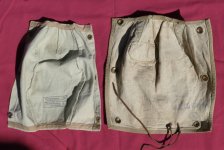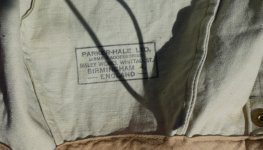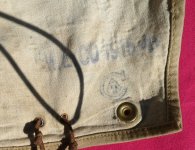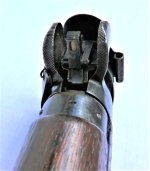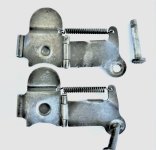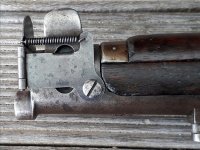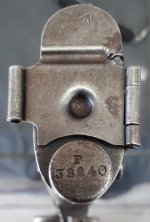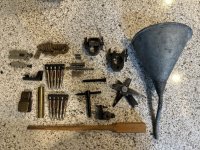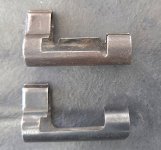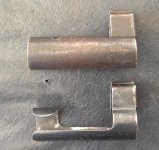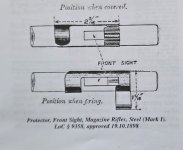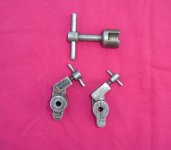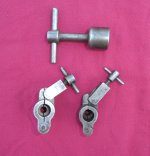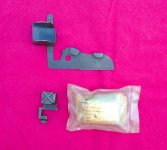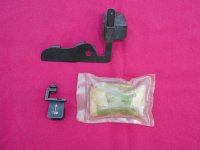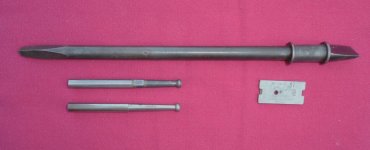Figured I'd post some bayonet stuff. First up are the socket bayonets for the No.4 rifle. (I'm omiting the No.7 on purpose in the first photo so the rest fill the screen)
Left to right:
-1941 Singer Manufacturing cruciform No.4MkI bayonet with typical machined and dated scabbard. This bayonet was also made as a trials bayonet with more elaborate markings, but I don't have one and the number out there is vanishingly small.
-1941 Singer Manufacturing non-cruciform No.4MkII bayonet also with typical machined and dated scabbard. Not long into 1941, production was changed to the spike we all know and love, but retained the marking scheme of the No.4MkI bayonet - subsequent makes/manufacturers omitted the GR/cypher markings.
-mid-war (undated) Savage No.4MkII bayonet - this is the type of No.4MkII bayonet you will typically encounter everywhere, with a variety of manufacturer markings. Generally won't be as nicely finished as an early singer bayonet, but still with a body forged from 1 piece. In this case, it's got what some people call a "victory" scabbard, made of bakelite in the US for lend lease. Originally there was a riveted-on (non-replaceable) web loop to serve as a frog, but like many of these, it's missing from my example.
-mid-war No.4MkII* bayonet - this differs from the MkII in that the spike is a separate piece swaged into the socket forging. This cut cost and allowed further distribution of manufacture to more factories. The MkII* was approved in late 1941, but most would be made 1942+. Functionally it's like a MkII and apart from markings, they can be hard to discern from a MkII. Often you can see the outline of the inserted spike on the back of the socket, where the metals blued a different hue. There is often also a pronounced shoulder where the spike meets the socket body, but some real MkII bayonets are also machined that way, so not foolproof. This example has a wartime expedient steel tube scabbard with a brazed on end piece marked S191 (i.e. manufactured by the
Franco-British Electrical Company).
-Late war (1944) No.4MkIII bayonet. Socket is made from castings and stamped and welded forging, and a separate MkII* style spike was welded in place. Usually these are finished in something akin to black phosphate, though they are often also suncorite painted. Comparatively few of these were made, as by the time production got rolling, lots of MkII and MkII* bayonets were in service, and these maybe would not have inspired a lot of confidence in the troops (i.e. they look cheap). This one is depicted with the late war MkIII plastic scabbard, which is also uncommon.
-post-war No.9 bayonet. These were all made post-war and essentially used the No.5 blade attached with a No.4MkII* type socket. They used the same scabbard as the No.5 and No.7 bayonets which were made with either a steel or gunmetal chape.
For those curious, here is a closeup of the markings difference between a singer no.4MkI and no.4MkII bayonet:
Some folks will say the spacing would indicate it should be SMC marked. All the examples I've seen are just SM marked, so either it was never there, or the stamping die broke early on and the C machined off to keep the die in service - who knows?
Also, scabbards got mixed around in service, so you can find any model with any scabbard - they all interchange.























































